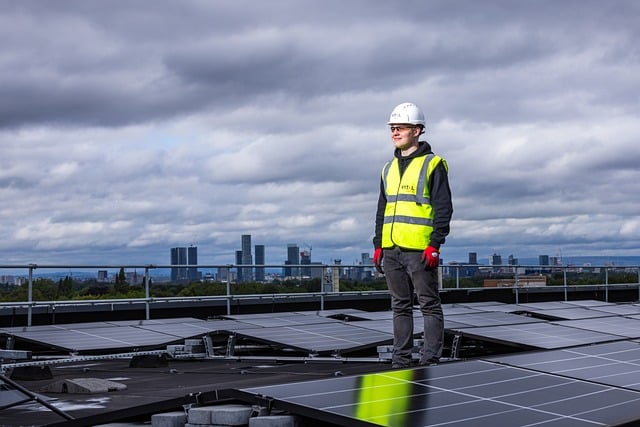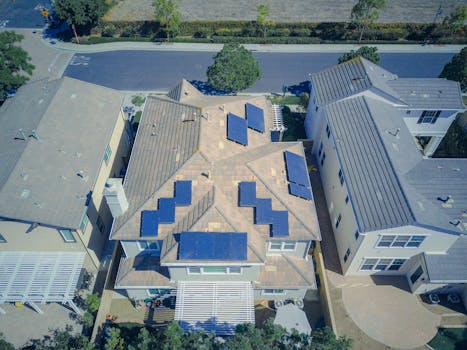“Maximize Efficiency: Essential Tips to Prevent Solar Inverter Failures.”
Preventing solar inverter failures is crucial for maintaining the efficiency and longevity of solar energy systems. Inverters play a vital role in converting the direct current (DC) generated by solar panels into alternating current (AC) for use in homes and businesses. To ensure optimal performance and minimize the risk of failures, it is essential to implement regular maintenance practices, monitor system performance, and address potential issues proactively. This introduction outlines key strategies for preventing solar inverter failures, including proper installation, routine inspections, environmental considerations, and timely repairs. By following these guidelines, solar system owners can enhance reliability and maximize the return on their investment in renewable energy.
Regular Maintenance Checks
Regular maintenance checks are essential for ensuring the longevity and efficiency of solar inverters, which play a critical role in converting the direct current (DC) generated by solar panels into alternating current (AC) suitable for household use. By implementing a routine maintenance schedule, homeowners can significantly reduce the risk of inverter failures, thereby maximizing the return on their solar investment. One of the first steps in this process is to conduct visual inspections of the inverter and its surrounding environment. This includes checking for any signs of physical damage, such as cracks or corrosion, which can compromise the unit’s performance. Additionally, it is important to ensure that the inverter is free from dust, debris, and any obstructions that could impede airflow and lead to overheating.
Moreover, monitoring the inverter’s performance through its built-in monitoring system can provide valuable insights into its operational health. Most modern inverters come equipped with monitoring capabilities that allow users to track energy production and identify any anomalies in real-time. By regularly reviewing this data, homeowners can detect potential issues early on, such as a drop in energy output, which may indicate a malfunction. If any irregularities are observed, it is advisable to consult with a qualified technician who can perform a more thorough diagnostic assessment.
In addition to visual inspections and performance monitoring, regular cleaning of the inverter and its components is crucial. Dust and grime can accumulate on the inverter’s surface and within its vents, obstructing airflow and leading to overheating. To mitigate this risk, homeowners should gently clean the exterior of the inverter with a soft cloth and ensure that the vents are clear of any obstructions. It is important to note that cleaning should be performed with caution, as water and cleaning solutions can damage the electrical components. Therefore, it is best to avoid using excessive moisture and to follow the manufacturer’s guidelines for maintenance.
Furthermore, checking the electrical connections is another vital aspect of regular maintenance. Over time, connections can become loose or corroded, which can lead to inefficiencies or even complete inverter failure. Homeowners should periodically inspect the wiring and connectors for any signs of wear or damage. If any issues are detected, it is crucial to address them promptly, either by tightening connections or replacing damaged components. Engaging a professional electrician for this task is often recommended, as they possess the expertise to ensure that all connections are secure and compliant with safety standards.
In addition to these proactive measures, it is also beneficial to schedule periodic professional inspections. While homeowners can perform basic maintenance tasks, a qualified technician can conduct a comprehensive evaluation of the inverter and its associated systems. These professionals have the tools and knowledge necessary to identify potential problems that may not be visible to the untrained eye. By investing in regular professional maintenance, homeowners can gain peace of mind knowing that their solar inverter is operating at peak efficiency.
In conclusion, regular maintenance checks are a fundamental aspect of preventing solar inverter failures. By conducting visual inspections, monitoring performance, cleaning components, checking electrical connections, and scheduling professional evaluations, homeowners can significantly enhance the reliability and lifespan of their solar inverters. Ultimately, these proactive steps not only protect the investment in solar technology but also contribute to a more sustainable energy future.
Proper Installation Techniques

Proper installation techniques are crucial in preventing solar inverter failures, as the inverter serves as the heart of a solar power system, converting the direct current (DC) generated by solar panels into alternating current (AC) for use in homes and businesses. To ensure optimal performance and longevity of the inverter, it is essential to adhere to best practices during the installation process. First and foremost, selecting a suitable location for the inverter is vital. The inverter should be installed in a shaded, well-ventilated area to prevent overheating, which can significantly reduce its efficiency and lifespan. Excessive heat can lead to thermal stress, causing components to degrade faster than they would under optimal conditions. Therefore, avoiding direct sunlight and ensuring adequate airflow around the unit are fundamental considerations.
In addition to location, proper mounting techniques play a significant role in the installation process. The inverter should be securely mounted on a stable surface, such as a wall or a dedicated rack, to minimize vibrations and movement. This stability is essential because excessive vibrations can lead to mechanical failures over time. Furthermore, it is important to follow the manufacturer’s guidelines regarding the orientation and tilt of the inverter. Many inverters are designed to operate most efficiently when installed in a specific orientation, and deviating from these recommendations can lead to suboptimal performance.
Moreover, attention to electrical connections is paramount. Ensuring that all wiring is correctly sized and rated for the inverter’s output is essential to prevent overheating and potential electrical failures. Using high-quality connectors and ensuring that all connections are tight and secure will help mitigate the risk of arcing, which can cause significant damage to the inverter. Additionally, it is advisable to use weatherproof enclosures for outdoor installations to protect the inverter from moisture and environmental factors that could lead to corrosion or short circuits.
Another critical aspect of proper installation techniques is grounding. A well-grounded inverter not only enhances safety by reducing the risk of electrical shock but also protects the system from voltage surges caused by lightning strikes or other electrical disturbances. Following local electrical codes and regulations regarding grounding practices is essential to ensure compliance and safety. Furthermore, incorporating surge protection devices can provide an additional layer of defense against voltage spikes, further safeguarding the inverter and the entire solar power system.
Regular maintenance checks after installation are also an integral part of preventing inverter failures. While this may not fall strictly under installation techniques, it is essential to establish a routine for inspecting the inverter and its connections. Regularly checking for signs of wear, corrosion, or loose connections can help identify potential issues before they escalate into significant problems. Additionally, keeping the inverter clean and free from dust and debris will promote better airflow and cooling, contributing to its overall efficiency.
In conclusion, preventing solar inverter failures begins with proper installation techniques that encompass careful consideration of location, mounting, electrical connections, grounding, and ongoing maintenance. By adhering to these best practices, solar power system owners can significantly enhance the reliability and longevity of their inverters, ensuring that their investment continues to provide clean, renewable energy for years to come.
Monitoring System Performance
Monitoring system performance is a critical aspect of preventing solar inverter failures, as it allows for the early detection of issues that could compromise the efficiency and longevity of the solar energy system. By implementing a robust monitoring strategy, solar system owners can ensure that their inverters operate optimally, thereby maximizing energy production and minimizing downtime. One of the first steps in effective monitoring is to utilize advanced monitoring technologies that provide real-time data on the inverter’s performance. These technologies often include web-based platforms and mobile applications that allow users to track key performance indicators such as energy output, efficiency ratios, and operational status from anywhere at any time.
In addition to real-time monitoring, it is essential to establish baseline performance metrics for the solar inverter. By understanding the expected performance under various conditions, system owners can more easily identify deviations that may indicate potential problems. For instance, if the energy output consistently falls below the established baseline during peak sunlight hours, it may signal an issue with the inverter or other components of the solar system. Regularly comparing actual performance against these benchmarks not only helps in identifying failures but also aids in optimizing system performance over time.
Moreover, integrating weather data into the monitoring system can enhance the analysis of inverter performance. Solar energy production is inherently linked to weather conditions, and understanding how factors such as temperature, cloud cover, and shading affect energy output can provide valuable insights. For example, high temperatures can lead to overheating in inverters, which may result in reduced efficiency or even failure. By correlating performance data with weather patterns, system owners can take proactive measures, such as adjusting the inverter’s operational settings or scheduling maintenance during periods of extreme weather.
Another important aspect of monitoring system performance is the implementation of regular maintenance checks. Scheduled inspections can help identify wear and tear on the inverter and other components before they lead to significant failures. During these inspections, technicians can assess the physical condition of the inverter, check for loose connections, and ensure that cooling systems are functioning properly. Additionally, software updates should not be overlooked, as manufacturers often release updates that improve performance and address known issues. Keeping the inverter’s firmware up to date is a simple yet effective way to enhance reliability.
Furthermore, it is advisable to establish alerts and notifications within the monitoring system. Many modern inverters come equipped with features that allow users to set thresholds for performance metrics. When these thresholds are breached, alerts can be sent via email or text message, enabling quick responses to potential issues. This proactive approach not only minimizes the risk of inverter failure but also helps in maintaining optimal energy production levels.
In conclusion, monitoring system performance is an indispensable strategy for preventing solar inverter failures. By leveraging advanced technologies, establishing baseline metrics, integrating weather data, conducting regular maintenance, and setting up alerts, solar system owners can significantly enhance the reliability and efficiency of their solar energy systems. Ultimately, a comprehensive monitoring approach not only safeguards the investment in solar technology but also contributes to the broader goal of sustainable energy production. By prioritizing performance monitoring, users can ensure that their solar inverters operate at peak efficiency, thereby maximizing the benefits of renewable energy.
Environmental Considerations
When it comes to ensuring the longevity and efficiency of solar inverters, environmental considerations play a crucial role. Solar inverters, which convert the direct current (DC) generated by solar panels into alternating current (AC) for use in homes and businesses, are susceptible to various environmental factors that can lead to premature failures. Understanding these factors and taking proactive measures can significantly enhance the performance and lifespan of these essential components of solar energy systems.
One of the primary environmental considerations is temperature. Solar inverters typically operate best within a specific temperature range, often between 0°C and 50°C (32°F to 122°F). Extreme temperatures, whether excessively high or low, can adversely affect the inverter’s internal components. For instance, high temperatures can lead to overheating, which may cause thermal stress and damage to the electronic components. Conversely, low temperatures can result in reduced efficiency and potential failure of the inverter. To mitigate these risks, it is advisable to install inverters in shaded or climate-controlled areas whenever possible. Additionally, ensuring proper ventilation around the inverter can help maintain optimal operating temperatures.
Another significant environmental factor is humidity. High humidity levels can lead to condensation within the inverter, which poses a risk of short circuits and corrosion of internal components. To prevent moisture-related issues, it is essential to choose inverters with appropriate ingress protection (IP) ratings, which indicate their resistance to dust and moisture. Installing the inverter in a dry, well-ventilated area can further reduce the risk of humidity-related failures. Moreover, regular inspections can help identify any signs of moisture accumulation, allowing for timely intervention.
Dust and debris accumulation is another environmental concern that can lead to inverter failures. Dust can obstruct ventilation openings, leading to overheating, while debris can interfere with the inverter’s electrical connections. To combat this issue, routine cleaning and maintenance are vital. Regularly inspecting the inverter and its surroundings for dust buildup and ensuring that the area remains clear of debris can significantly enhance the inverter’s performance. Additionally, installing protective covers or enclosures can help shield the inverter from environmental contaminants.
Furthermore, exposure to harsh weather conditions, such as heavy rain, snow, or hail, can also impact the reliability of solar inverters. Inverters should be installed in locations that minimize exposure to extreme weather events. For instance, mounting the inverter on a wall or under a protective overhang can provide additional shielding from the elements. It is also essential to ensure that all electrical connections are properly sealed and protected from water ingress, as moisture can lead to electrical failures.
Lastly, the geographical location of the solar installation can influence inverter performance. Areas with high levels of solar radiation may require inverters that are specifically designed to handle increased energy loads. Understanding the local climate and selecting inverters that are rated for those conditions can help prevent failures due to environmental stressors.
In conclusion, preventing solar inverter failures requires a comprehensive understanding of environmental considerations. By addressing factors such as temperature, humidity, dust accumulation, weather exposure, and geographical conditions, solar system owners can significantly enhance the reliability and longevity of their inverters. Proactive measures, including proper installation, regular maintenance, and informed equipment selection, are essential in safeguarding these critical components of solar energy systems. By prioritizing these environmental considerations, users can ensure that their solar investments continue to deliver clean, renewable energy for years to come.
Q&A
1. **Question:** What regular maintenance should be performed to prevent solar inverter failures?
**Answer:** Regularly inspect and clean the inverter, check for loose connections, and ensure proper ventilation to prevent overheating.
2. **Question:** How can environmental factors affect solar inverter performance?
**Answer:** Protect the inverter from extreme temperatures, moisture, and dust by installing it in a shaded, dry, and clean location.
3. **Question:** What role does monitoring play in preventing inverter failures?
**Answer:** Implementing a monitoring system allows for real-time performance tracking, helping to identify issues early and prevent potential failures.
4. **Question:** Why is it important to use high-quality components in solar inverter systems?
**Answer:** High-quality components are more reliable and durable, reducing the risk of failures and extending the lifespan of the inverter.
Conclusion
To prevent solar inverter failures, regular maintenance is essential, including routine inspections, cleaning of components, and monitoring performance metrics. Ensuring proper installation and ventilation, using high-quality equipment, and implementing surge protection can also mitigate risks. Additionally, keeping firmware updated and addressing any signs of wear or malfunction promptly will enhance the longevity and reliability of solar inverters. Overall, proactive measures and diligent care are key to preventing failures and ensuring optimal system performance.




